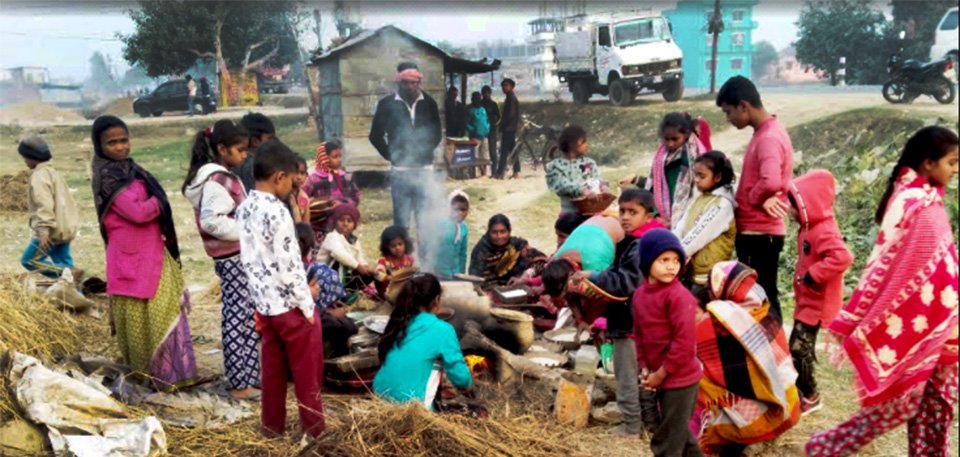Tradition of making puffed rice in Ghonsar getting extinct in Terai

By Shiva Shankar Mishra, Bara, Dec. 31: With the decline in the use of different kinds of Ghonsar, a traditional earthen pot used to make puffed rice, the availability of tasty puffed rice in the Terai region has been decreasing.
Puffed rice made in Ghonsar used to be the first choice of many people. In today's era, although the modern mills have replaced Ghonsar, puffed rice manufactured in the mills cannot beat the authentic taste of puffed rice fried in Ghonsar.
Bhikhari Sah, 63, of Laxmanwa Tole in Birgunj Metropolitan City-15, said that he was compelled to operate Ghonsar at an old age after both of his sons died young.
Bhikhari said that his family, which includes his wife, daughter-in-law, and two grandchildren, were living off the 5-6 kilograms of rice earned by making puffed rice at Laxmanwa Tole, which lies at the border of Bara and Parsa District.
Previously, one Ghonsar used to exist in each village where the villagers used to visit to make puffed rice from the grains of their own choice. But these days, the Ghonsars are on the verge of extinction.
"The Ghonsars are in operation in 4-5 places of the district- in Prasauni of Parsa, Nakatuwa, Nagawa, Inarwa, and Pokhariya among others by lighting a fire on straws and chaff," said Bhikhari.
Likewise, Radhika Devi, 72, of Prasauni Rural Municipality-5, who has also been running a Ghonsar for her living, said that the Ghonsar was in operation only in Kalyanpur Tole of Swan Rural Municipality in Bara, Uchidiha in Simrongadh Municipality and in Kalaiya.
Mostly women used to visit the Ghonsar to fry various grains including rice, corn, soybeans, beaten rice, and so forth. Ghonsar used to be placed afar from settlement areas where a big hole is dug to place three earthen pots (Khapadis) and heat the mud to fry grains.
Puffed rice is prepared after the grains were fried by heating the mud.
Radhika said that her four family members were sustaining on the income earned by operating Ghonsar.
The Ghonsariyas used to receive some cash and some portion of the grains brought to fry in the Ghonsar as the charge for frying.
Godh, Bhat, Bhujawa, Baniya, Kanu, Bhansariya, and other low-income castes used to operate Ghonsar for a living.
Banarasi Godh of Mahagadhimai Municipality-10 said, "Increment in other employment opportunities including foreign employment, availability of readymade puffed rice, the establishment of mills had reduced the obtainability of Ghonsar."
Punam Devi, who had visited the Ghonsar to fry rice, said that it was essential to protect Ghonsars to give continuity to the tradition.
Recent News

Do not make expressions casting dout on election: EC
14 Apr, 2022
CM Bhatta says may New Year 2079 BS inspire positive thinking
14 Apr, 2022
Three new cases, 44 recoveries in 24 hours
14 Apr, 2022
689 climbers of 84 teams so far acquire permits for climbing various peaks this spring season
14 Apr, 2022
How the rising cost of living crisis is impacting Nepal
14 Apr, 2022
US military confirms an interstellar meteor collided with Earth
14 Apr, 2022
Valneva Covid vaccine approved for use in UK
14 Apr, 2022
Chair Prachanda highlights need of unity among Maoist, Communist forces
14 Apr, 2022
Ranbir Kapoor and Alia Bhatt: Bollywood toasts star couple on wedding
14 Apr, 2022
President Bhandari confers decorations (Photo Feature)
14 Apr, 2022










